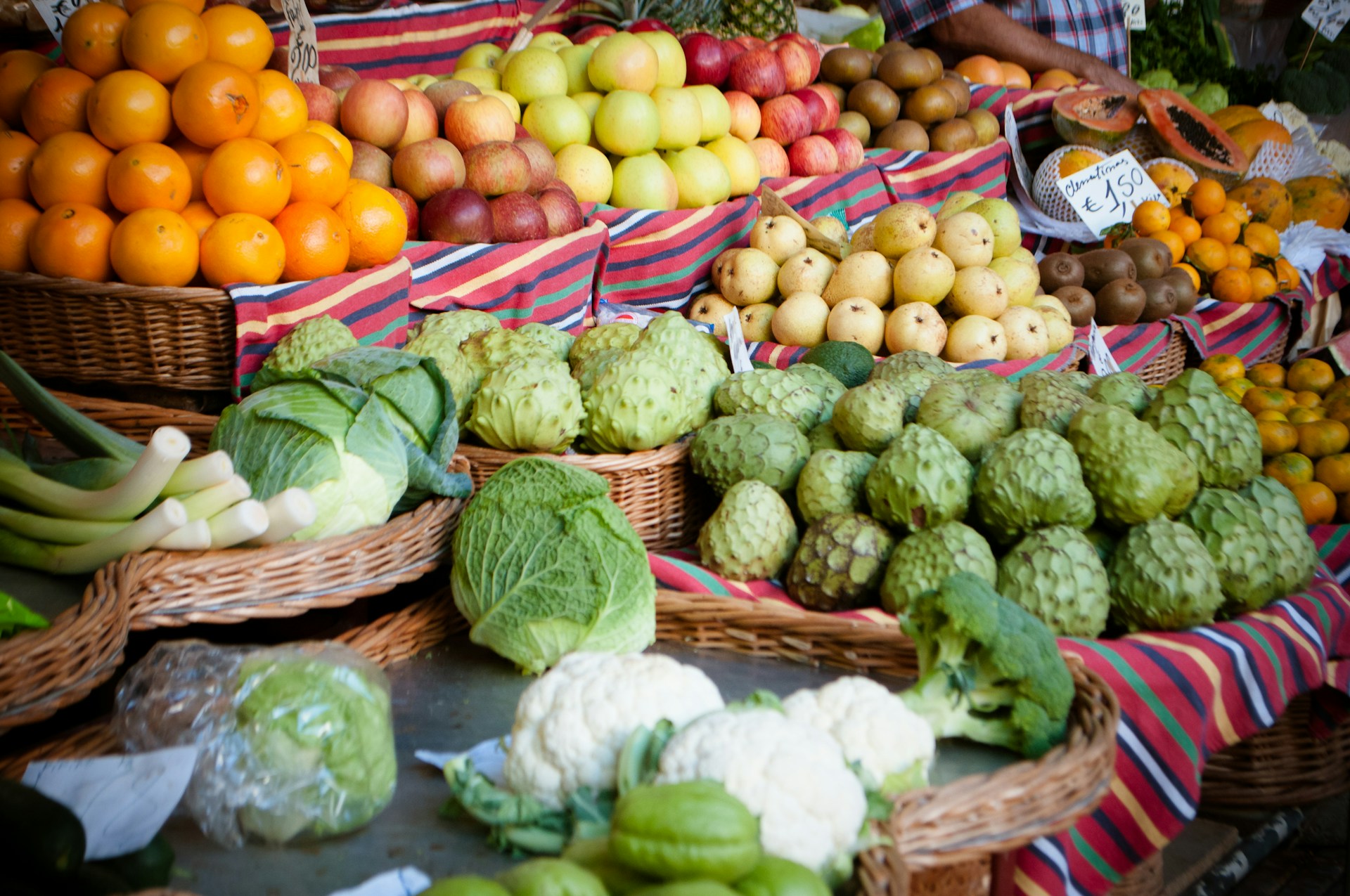In the realm of produce distribution, accurate forecasting is crucial to maintaining quality and minimizing waste.
However, there are many stumbling blocks along the way, disarraying the process.
From fluctuating consumer demand to variable weather patterns, capturing and forecasting data accurately continues to pose a daunting task.
Yet, these challenges are in no way insurmountable.
With technological advancements and systematic planning, various solutions have surfaced over time.
The purpose of this blog post is to delve into these issues, shedding light on both pitfalls and their potential fixes within the produce distribution sector.
Contents
- Forecasting Pitfalls & Solutions In Produce Distribution
- 1. Inaccurate Demand Prediction: Use predictive analytics tools.
- 2. Inventory Mismanagement: Use automated inventory control systems.
- 3. Inconsistent Supplier Quality: Implement Supplier Scorecards
- 4. Seasonal Variability: Plan with historical data analysis
- 5. Undervalued Produce: Apply dynamic pricing strategies.
- 6. Overstock: Increase Promotions or Discounts
- 7. Unexpected Weather Changes: Apply Weather-Driven Forecasting
- 8. Incorrect Storage: Invest in quality storage facilities.
- 9. Transportation Delays: Develop a backup logistics plan.
- 10. Market Price Fluctuations: Use Futures Contract Hedging
- The Bottom Line
Forecasting Pitfalls & Solutions In Produce Distribution
1. Inaccurate Demand Prediction: Use predictive analytics tools.
The process of predicting demand for produce can be quite challenging, especially considering the numerous variables that can impact consumer behavior.
Historically, distributors have relied on their instincts or rudimentary forecasting methods, which have often resulted in inaccurate demand predictions.
However, advances in technology have created an opportunity for businesses to leverage predictive analytics tools – a much more accurate and efficient way to forecast demand.
These tools use machine learning and AI technologies to process large datasets and identify patterns, tendencies, and trends in past consumer behavior.
The data analyzed by these tools is broad and diverse, encompassing everything from past sales data, market trends, holiday seasons, and even weather patterns.
By accounting for these different variables, the predictive analytics tools then provide a much more accurate, data-backed forecast of demand.
Getting this forecast right is crucial to every other aspect of the distributor’s operations, from inventory management to order fulfilment and even pricing strategies.
When you know how much of a certain produce item customers are likely to demand, you can address overstock or stock-out scenarios before they occur, optimizing your inventory in the process.
Furthermore, more accurate demand forecasting enables businesses to streamline their supply chain processes, reduce wasted produce, and in turn, boost their overall profits.
Demand forecasting using predictive analytics tools also reduces the reliance on instinct or intuition, thereby reducing human error in the forecasting process.
This results in a more scalable and reliable demand forecasting process that can respond quickly and accurately to changes in the marketplace.
Moreover, predictive analytics also helps in identifying new opportunities and markets for produce, expanding the business horizon for distributors.
While investing in predictive analytics tools will come with an initial cost, the reduction in losses from overstock or shortages, improved operational efficiency, and potential increase in sales are likely to offer a strong return on the investment.
Thus, adapting predictive analytics tools in demand forecasting is a powerful way for produce distributors to improve their accuracy in forecasting demand and avoid the pitfalls of inaccurate demand prediction.
Overall, accurate demand prediction using predictive analytics tools can drastically influence and improve the various aspects of produce distribution.
2. Inventory Mismanagement: Use automated inventory control systems.
One of the significant challenges faced by organizations in the produce distribution sector is inventory mismanagement.
This problem is often scale and complexity-related as organizations grow and diversify their product range.
Keeping track of numerous types of produce, each with different shelf life and storage requirements, can be a monumental task.
The solution to this challenge lies in using automated inventory control systems, which brings efficiency, accuracy, and speed to inventory management.
These systems not only keep track of inventory levels but also predict when replenishments would be needed, keeping tabs on the demand and supply trends.
Utilizing artificial intelligence and machine learning, these systems can predict demand with great accuracy and adjust inventory levels accordingly.
This results in significant reduction of wastages due to overstocking and missed opportunities due to understocking.
Automated inventory control systems come with robust reporting features that offer valuable insights into inventory performance.
The data derived from these reports can be leveraged for strategic decision-making, such as forecasting, pricing, and other operational decisions.
Firms that have adopted automated inventory control systems report improved inventory turnover ratios, contributing to better financial performance.
These systems also improve operational efficiency by freeing up staff time previously spent on manual inventory management.
Besides, most systems are easy to integrate with other enterprise solutions, providing a seamless flow of data across the value chain, from procurement to sales.
Though the initial investment might seem substantial, the cost savings and efficiency gains from improving inventory management are significant in the long run.
Crucially, automated inventory control systems mitigate the risk of human error in inventory tracking and forecasting.
So, for produce distribution firms struggling with inventory mismanagement, making the shift to automated solutions can be a game-changing move.
In summary, adopting automated inventory control systems is a promising strategy for addressing the challenges surrounding inventory mismanagement in the produce distribution industry.
3. Inconsistent Supplier Quality: Implement Supplier Scorecards
In the world of produce distribution, ensuring consistency of supplier quality is crucial to maintaining your business’ reputation and customer satisfaction.
However, it’s a common pitfall given the inherent variability of agricultural products; hence why it’s imperative to implement supplier scorecards.
Supplier scorecards are a tool for evaluating and tracking the quality and performance of your suppliers, essentially producing a ‘score’ for each supplier based on set criteria.
The criteria you set should reflect what’s important to your business, from delivery punctuality and accuracy, to produce quality and consistency.
A higher ‘score’ indicates a supplier who meets, or even exceeds, your standards; while a lower one indicates issues that may warrant discussions, action plans, or even re-evaluation of the relationship.
Such a system facilitates clear, objective communication with your suppliers about what exactly is expected from them, thus ensuring a more consistent supply of high-quality produce.
In fact, the transformation from inconsistent supplier quality to uniform high-quality supply can dramatically improve your business’ overall operations.
Incorporating supplier scorecards not only helps benchmark providers but also encourages them to sustain high standards, forging productive and reliable partnerships.
It’s important to remember that while implementing supplier scorecards can be a solution, it’s not a one-size-fits-all fix.
The effectiveness of a supplier scorecard hinges on its proper design and implementation.
Best practice involves regularly updating the criteria as your business grows or evolves, reflecting any changes or developments in expectations.
Furthermore, engaging suppliers in the scorecard development process can promote understanding and buy-in, making it a more effective tool.
Consistently sharing results with your suppliers will build transparency and trust, also facilitating discussions about improvements if required.
Ultimately, a supplier scorecard transforms ambiguity into clarity, inconsistency into predictability, and potential adversaries into allies, all of which contribute to a stronger and more assured produce distribution operation.
So, while inconsistent supplier quality can be a damaging pitfall for any business in the produce distribution industry, supplier scorecards present a solution with immense potential for transforming supplier relations and enhancing overall business performance.
As with any business tool, commitment to ongoing and strategic use is key to its success.
4. Seasonal Variability: Plan with historical data analysis
Seasonal variability is a common and significant challenge that many produce distributors face.
The demand for produce often fluctuates throughout the year, leading to periods of high and low demand that can cause a great deal of strain on the distribution process.
Because produce is a perishable good, the stakes are particularly high when it comes to managing seasonal variability.
Distributors are left with unsold goods that quickly lose their value, and the financial implications can be severe.
Planning for seasonal variability requires that businesses make use of historical data analysis.
This refers to the process of using past data and trends to help predict future ones, therefore allowing organizations to plan accordingly and reduce the potential negative impacts of seasonal variability.
Historical data analysis can reveal patterns in seasonal demand that may have previously gone unnoticed.
This data can be used to forecast and plan for future seasons, taking into consideration the periods of high and low demand that were observed in the past.
Such strategic planning can help businesses to avoid overstocking or understocking, both of which can be costly.
Automation can play a critical role in improving the accuracy and efficiency of the forecasting process.
There are various predictive analytics tools that can analyze historical data and generate accurate forecasts automatically, freeing up time and resources.
The advantage of such tools is that they can ‘learn’ from the data, making their predictions more accurate as they process more data over time.
However, it’s important to remember that historical data analysis is just one piece of the puzzle.
The success of your forecasting also depends on several other factors, such as your understanding of your market and your relationships with your suppliers.
However, with careful planning and the right tools, it’s possible to mitigate the effects of seasonal variability and keep your business running smoothly.
5. Undervalued Produce: Apply dynamic pricing strategies.
The value of produce is often overlooked, leading to significant losses for distributors and growers. Underpricing can represent a loss of potential profit, while overpricing can drive away potential customers. This is where dynamic pricing strategies come into play.
Dynamic pricing is a strategy where prices are adjusted in real-time based on market demand, competitor prices, and other external factors. For instance, when demand for a particular fruit is high, its price can be adjusted upwards to reflect this increased demand.
Conversely, when the fruit is nearing its expiry date and its demand is low, the price can be lowered to encourage immediate purchase and prevent wastage. This ensures that the produce is never undervalued or overpriced.
Dynamic pricing protects against undervaluing produce by adjusting prices in real-time based on a number of factors such as demand, competitor prices, and expiry dates.
In the world of produce distribution, dynamic pricing can make a noticeable difference in profits. By accurately valuing each item of produce, distributors can maximize their revenue and reduce waste.
Implementing dynamic pricing strategies requires a deep understanding of the market and consumer behavior. Distributors need to consistently monitor market trends, competitor prices, and demand patterns. This can be challenging, but with today’s advanced analytics tools, it is more than feasible.
Furthermore, dynamic pricing introduces a degree of flexibility into the pricing strategy. The ability to change prices on the fly allows distributors to react quickly to market changes and capitalize on otherwise missed opportunities.
More than just a pricing strategy, dynamic pricing can be a powerful tool for inventory management. By lowering the price of produce that is about to expire, distributors can move these items quickly, reducing waste and freeing up storage space for fresher items.
Of course, dynamic pricing has its risks too. If not managed properly, it can lead to price wars with competitors and potentially alienate customers. However, with careful management and the use of predictive analytics, these risks can be minimized.
In the end, the most important part of a dynamic pricing strategy is maintaining a balance between maximizing profits and maintaining customer satisfaction. This delicate balance can only be achieved with careful planning, consistent monitoring, and continual adjustment.
In sum, applying dynamic pricing strategies to undervalued produce can have a significant impact on profit margins in produce distribution. By ensuring that the price of each item accurately reflects its value, distributors can increase revenue, reduce waste, and improve customer satisfaction.
6. Overstock: Increase Promotions or Discounts
In the realm of produce distribution, overstock can pose significant challenges.
The primary issue stems from the perishable nature of the products, leading to high levels of waste if inventory isn’t sold promptly.
As such, adequate management of overstock becomes crucial to prevent both economic and environmental repercussions.
Increasing promotions or discounts can be a compelling strategy to manage overstock issues in produce distribution.
By adjusting prices temporarily, companies can stimulate demand for their products, providing an outlet for surplus inventory to move swiftly.
Timely promotions can serve as an effective tool to balance out the supply-and-demand equation.
In turn, this ensures that excess produce doesn’t go to waste, leading to sustained profitability and minimal environmental impact.
Throughout this process, it’s crucial to communicate openly with customers, highlighting the savings they will enjoy thanks to the discounts.
Moreover, it’s critical that companies properly strategize these promotions, ensuring they don’t inadvertently harm their brand image or lead to unfair competition.
An effective promotional strategy is well-structured, timed, and controlled, ensuring that it achieves its goal without causing unintended consequences.
Using data-driven approaches can assist businesses in crafting suitable promotional campaigns, based on customer behavior, preferences, and past sales data.
In this context, understanding when and how to initiate discounts and promotions for overstock is pivotal.
Moreover, to attain the desired results, there must be proper monitoring of these promotional activities, requiring management to assess and evaluate the effectiveness of each strategy.
Whether it’s offering a season-end discount, bulk discount, conditional discounts, or combination offers, the right promotional strategy can help manage overstock effectively.
While managing overstock through increased promotions or discounts can alleviate some challenges, it is not a standalone solution.
To fully address the issue of overstock, it should be complemented by other strategies such as accurate demand forecasting, effective inventory management, and strategic supplier partnerships.
7. Unexpected Weather Changes: Apply Weather-Driven Forecasting
The impact of unexpected weather changes on produce distribution cannot be understated.
Shifts in weather can damage crops, disrupt the harvest timeline, and subsequently strain the entire supply chain.
Weather-driven forecasting offers a proactive solution to minimize this disruption.
This technique combines historical weather data with current trends and future forecasting to provide distributors with a more accurate model to inform their planning.
With an accurate weather-driven forecast, produce distributors can better predict potential challenges and adjust their strategies efficiently to minimize losses.
By effectively using weather-driven forecasting, distributors can turn uncertainty into manageable risks.
Weather also influences consumer buying behavior.
In cooler months, consumers might buy less of a certain kind of fruit or vegetable, while in warmer months they might buy more.
These purchasing shifts can present challenges to the distributor who must adapt quickly to keep their inventory level balanced and avoid shortages or overstocks.
Weather-driven forecasting can aid in aligning inventory and demand.
Therefore, the importance of implementing weather-driven forecasting in produce distribution should not be underestimated.
Despite the potential benefits, it’s important to note that weather-driven forecasting isn’t a magical solution that completely eradicates all weather-related challenges in produce distribution.
It’s a tool that helps to better manage and plan for these issues.
Like any tool, its effectiveness is largely dependent on how it’s used.
Proper implementation and continued refinement are required to achieve optimum results.
To fully leverage the benefits of weather-driven forecasting, companies must integrate this forecasting method into their overall strategy for managing the supply chain.
Another essential factor to consider is that although historical data is imperative for weather-driven forecasting, it alone cannot predict the future accurately.
So it’s critical to supplement it with real-time data and advanced analytics to enhance forecasting accuracy.
The goal of weather-driven forecasting is to find patterns that can illuminate future trends, thus better equipping produce distributors to prepare for the unexpected and manage the associated risks proactively.
8. Incorrect Storage: Invest in quality storage facilities.
One common pitfall in the distribution of perishable produce is incorrect storage which can potentially lead to significant losses.
Inappropriate storage conditions can lead to product spoilage, causing significant inefficiencies in the overall supply chain.
Therefore, investing in high-quality storage facilities is essential for the stabilization of produce quality and ensuring that it arrives to end consumers in the best condition.
Adequate storage includes proper temperature and humidity control, which are vital to extend the produce’s shelf life.
For instance, inadequate cool chain storage can facilitate bacterial growth and accelerate produce spoilage.
Quality storage facilities also consider adequate space management to prevent overcrowding of produce, which can risk bruising and damage.
Consequently, damaged goods not only result in financial losses but also harm the reputation of the distributor in the long term.
Fruit and vegetables have different storage requirements to maintain freshness and flavor.
Thus, it’s imperative to have proper knowledge of these individual requirements and equip storage facilities accordingly.
For instance, certain types of produce release a gas known as ethylene when ripening which can damage other sensitive produce if stored together.
Automated inventory systems can help in managing this by separating produce based on their specific storage needs and requirements.
Regular maintenance and cleanliness of storage facilities is another crucial factor that ensures the quality of stored produce.
Investing in a quality storage facility can undoubtedly incur significant upfront costs, but it’s a worthwhile investment in the long run.
Not only does it help in reducing wastage, but also increases efficiency and boost customer satisfaction, which inevitably leads to increased sales.
Undoubtedly, minimal disruption in the cold chain, coupled with effective storage solutions can go a long way in ensuring good quality produce reaches the retailer, reducing unnecessary wastage and improving overall profitability of the business.
9. Transportation Delays: Develop a backup logistics plan.
In the complex and often unpredictable world of produce distribution, one of the most significant and frequent challenges involves transportation delays.
These delays, often due to unforeseen circumstances like traffic congestion, vehicle breakdowns, or weather conditions, can disrupt the entire supply chain, leading to losses.
A well-crafted backup logistics plan can help mitigate the impacts of these delays.
Having a robust backup logistics plan in place is not an option but a necessity in today’s hyper-connected, competitive produce distribution landscape.
It’s important to recognize that developing such a plan is not a one-time exercise, but an ongoing effort that needs to be refined and improved over time, as the business and market conditions change.
Developing this plan begins with identifying the key areas within your logistics operation that are most susceptible to delays.
Whether it’s road transport, air freight, or shipping, each mode of transport comes with its unique challenges and risks.
Once these potential bottleneck points are identified, the next step would be to work out alternatives and solutions for each of these points.
For instance, having agreements with multiple transport providers may provide the needed flexibility to switch transport modes or routes when necessary.
Investing in advanced route planning software can also increase the ability to respond promptly to unexpected circumstances.
Maintaining healthy relationships with key suppliers can garner favor during contingencies and enable you to tap into extra resources when needed.
Moreover, staying updated with latest news and trends, especially those related to logistics and transportation, can help foresee potential issues and develop adequate responses in advance.
It’s also crucial to ensure regular communication with all key stakeholders during a delay to manage expectations and keep everyone informed.
Through careful planning and strategic relationship building, it’s possible to minimize the damages caused by transportation delays.
Finally, remember that monitoring and reviewing the effectiveness of the backup plan is crucial.
All these proactive approaches towards handling transportation delays will ultimately enhance the resilience of your distribution network, ensuring that produce reaches the consumers when it should, in its best state.
10. Market Price Fluctuations: Use Futures Contract Hedging
Within the wide realm of produce distribution, market price fluctuations pose a significant challenge to distributors and retailers.
The prices of fresh produce can vary dramatically due to a range of factors, including weather conditions, seasonality, and supply-demand dynamics.
This volatility can create substantial financial uncertainty for those buying and selling fresh produce, impacting profitability and even the sustainability of the business.
However, there exist strategies that can help businesses manage such market price fluctuations, with one such effective tool being the use of futures contract hedging.
Essentially, futures contracts are financial agreements that require the buyer to purchase an asset or the seller to sell an asset at a predetermined price and date in the future.
For produce distributors, these contracts can serve as a safeguard against unpredictable price swings in the commodities market.
By locking in a price ahead of time, businesses can better manage their budgets and financial forecasts, reducing the potential damages caused by price fluctuations.
Despite their effectiveness, futures contracts are not a one-size-fits-all solution and require careful consideration and understanding before use.
Understanding the intricacies of futures contracts, including their structure and how the commodities market operates, is necessary for successful implementation.
Furthermore, businesses need to regularly review their futures contracts, as the commodities market can quickly shift due to external factors like geopolitical uncertainty or sudden changes in supply and demand.
While futures contracts can provide a degree of price stability, they don’t completely eliminate the inherent risk associated with the commodities market.
Distributors should view futures contracts as a part of a larger risk management strategy, not as the sole solution to market price fluctuations.
The key to managing market price fluctuations lies not just in hedging practices, but also in developing sound financial strategies, building robust supplier relationships, and fostering a deep understanding of market dynamics and trends.
Through futures contract hedging and other strategic planning methods, produce distributors can create a shield against market volatility, ensuring business sustainability and fostering long-term growth.
The Bottom Line
Supply chain issues can significantly impact the business resulting in revenue losses, but these can be mitigated with the right strategies and the use of technology.
Predictive analytics can enhance accurate demand prediction, whereas automated systems can help in managing inventory optimally.
Consistency in supplier quality can be monitored through supplier scorecards, and historical data can be used effectively to address seasonal variability in demand.
Dynamic pricing strategies may help in getting fair value for produce, and many overstock issues can be resolved through targeted promotions or discounts.
Unpredictable changes in weather can be managed with weather-driven forecasting models, while investing in quality storage facilities can minimize losses due to incorrect storage.
A backup logistics plan can reduce delays in transportation, and the impact of market price fluctuations can be mitigated through futures contract hedging.
These strategies and tools offer solutions to the most pressing challenges facing supply chain professionals today.




